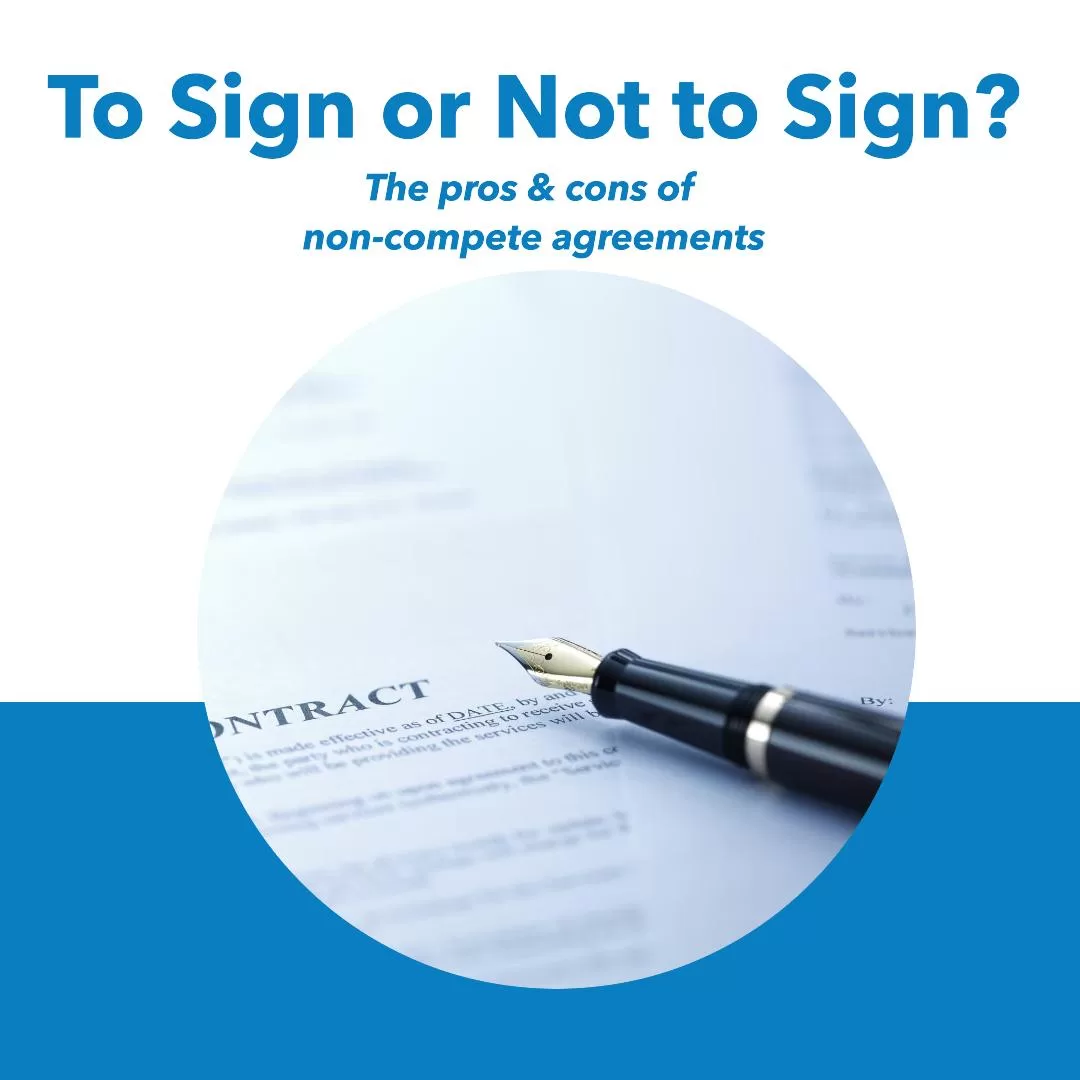Non-compete agreements are becoming increasingly common in many industries, but before signing one, it’s crucial to understand the implications and weigh the pros and cons. These agreements restrict employees from working for a competitor or starting a competing business for a certain period of time after leaving their current employer. Here are some factors to consider when deciding whether to sign a non-compete agreement: The Pros and Cons of Non-Compete Agreements.

The pros & cons of
non-compete agreements
- Scope and Duration: Pay close attention to the scope and duration of the non-compete agreement. Some agreements may restrict you from working in the same industry for a few months, while others may impose longer-term limitations. Consider whether the restrictions are reasonable given your role, industry norms, and career aspirations.
- Impact on Future Opportunities: Signing a non-compete agreement could limit your future career opportunities. If you’re bound by strict restrictions, it may be challenging to find work in your field if you decide to leave your current employer. Evaluate whether the potential benefits of the current job outweigh the limitations imposed by the non-compete agreement.
- Negotiation: Don’t hesitate to negotiate the terms of the non-compete agreement before signing. Employers may be willing to modify the agreement to make it more reasonable or provide compensation in exchange for agreeing to the restrictions. Seek legal advice if necessary to ensure that the agreement is fair and enforceable.
- Enforceability: Non-compete agreements vary in enforceability depending on state laws and specific circumstances. Some states place strict limitations on these agreements to protect employees’ rights to work freely, while others enforce them more rigorously. Research the laws in your state or consult with an attorney to understand your rights and obligations.
- Alternative Options: If you’re uncomfortable with the terms of a non-compete agreement, explore alternative options with your employer. You may be able to negotiate a non-disclosure agreement (NDA) or other confidentiality measures that protect the company’s interests without limiting your future career prospects as significantly.
- Potential Consequences: Understand the potential consequences of violating a non-compete agreement. Breaching the terms could result in legal action, financial penalties, and damage to your reputation within the industry. Take the time to read and fully comprehend the terms of the agreement before signing to avoid any unintended consequences down the line.
Ultimately, the decision to sign a non-compete agreement depends on your individual circumstances, career goals, and risk tolerance. Consider consulting with a legal professional to assess the implications and explore your options before making a decision that could impact your future opportunities.

